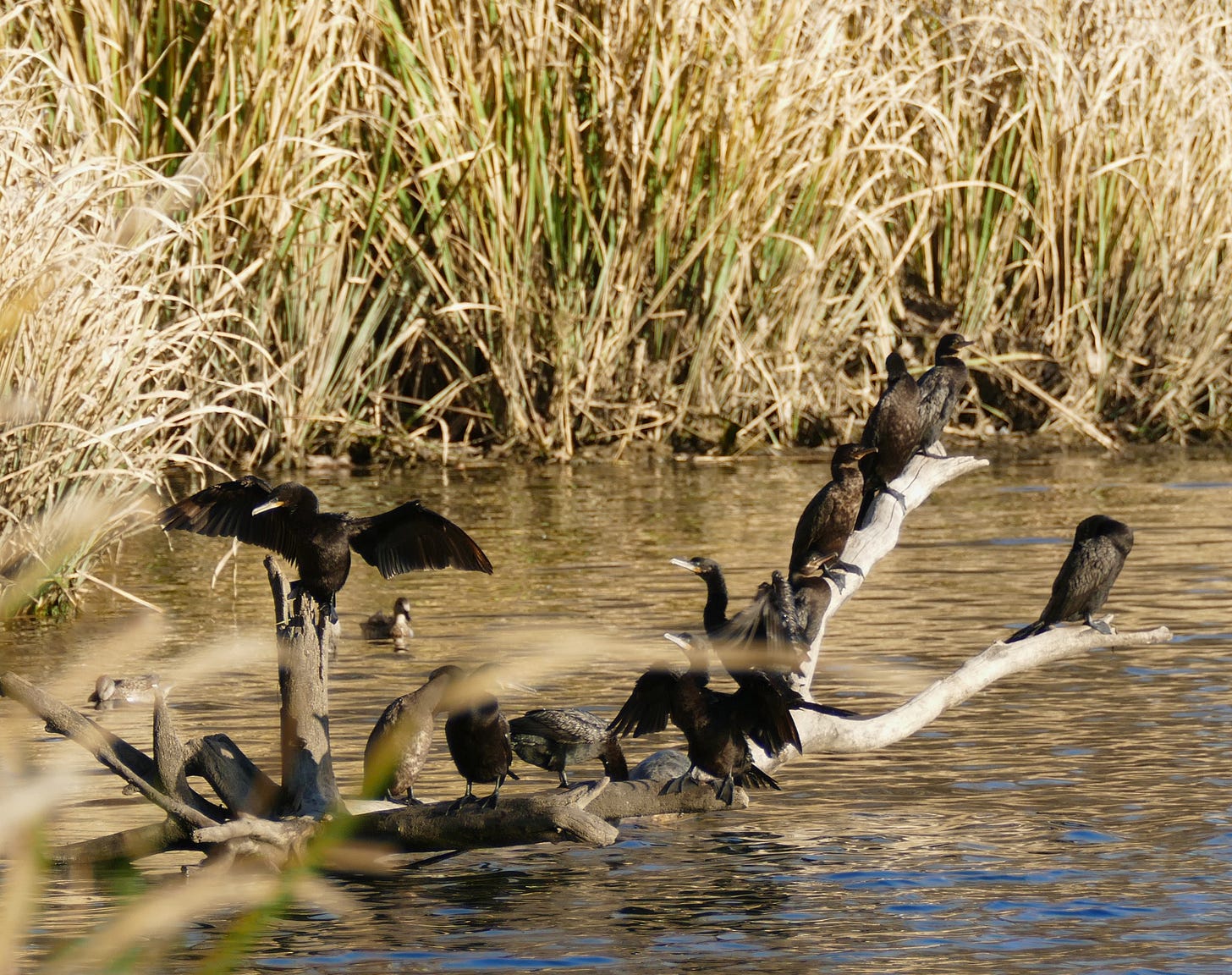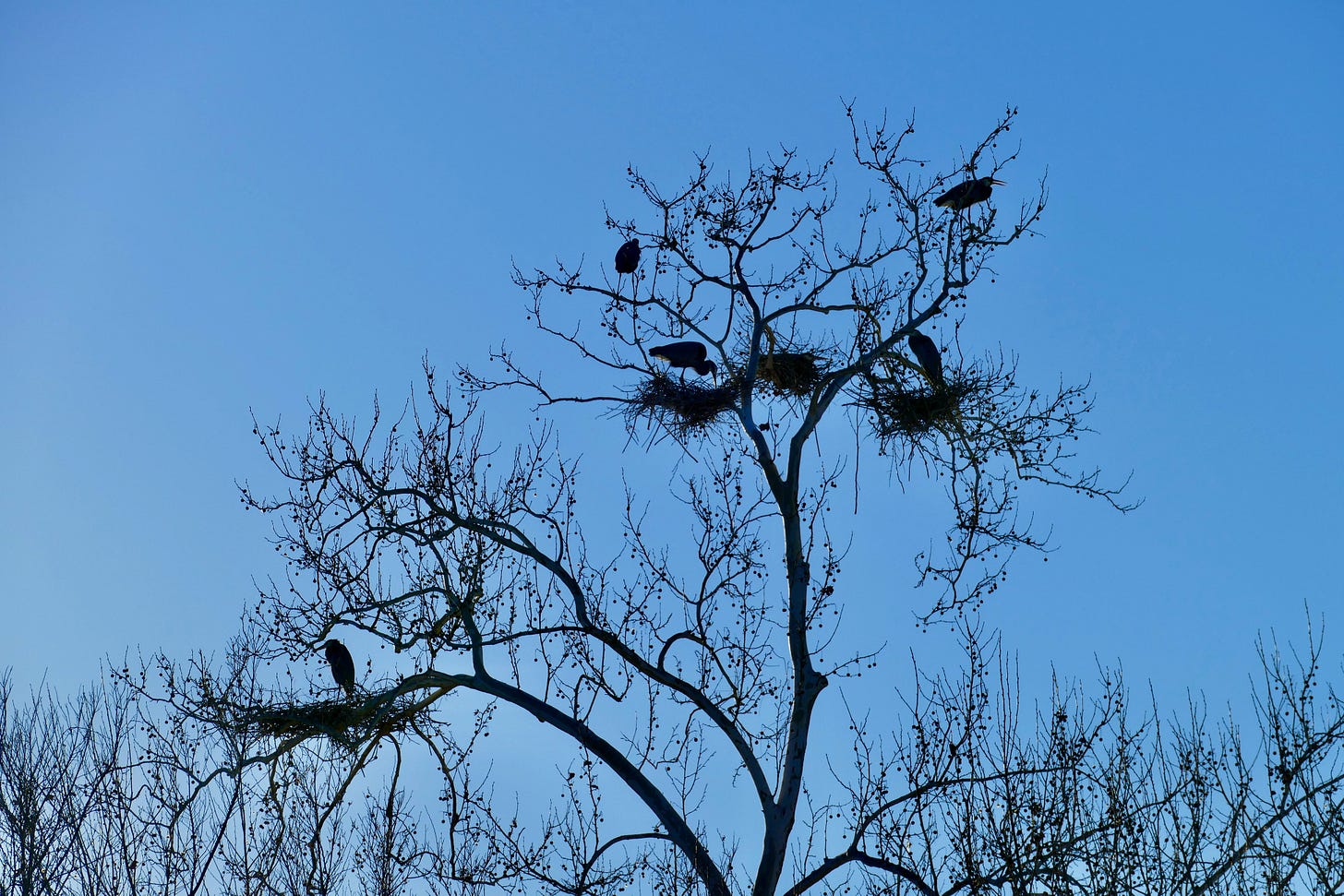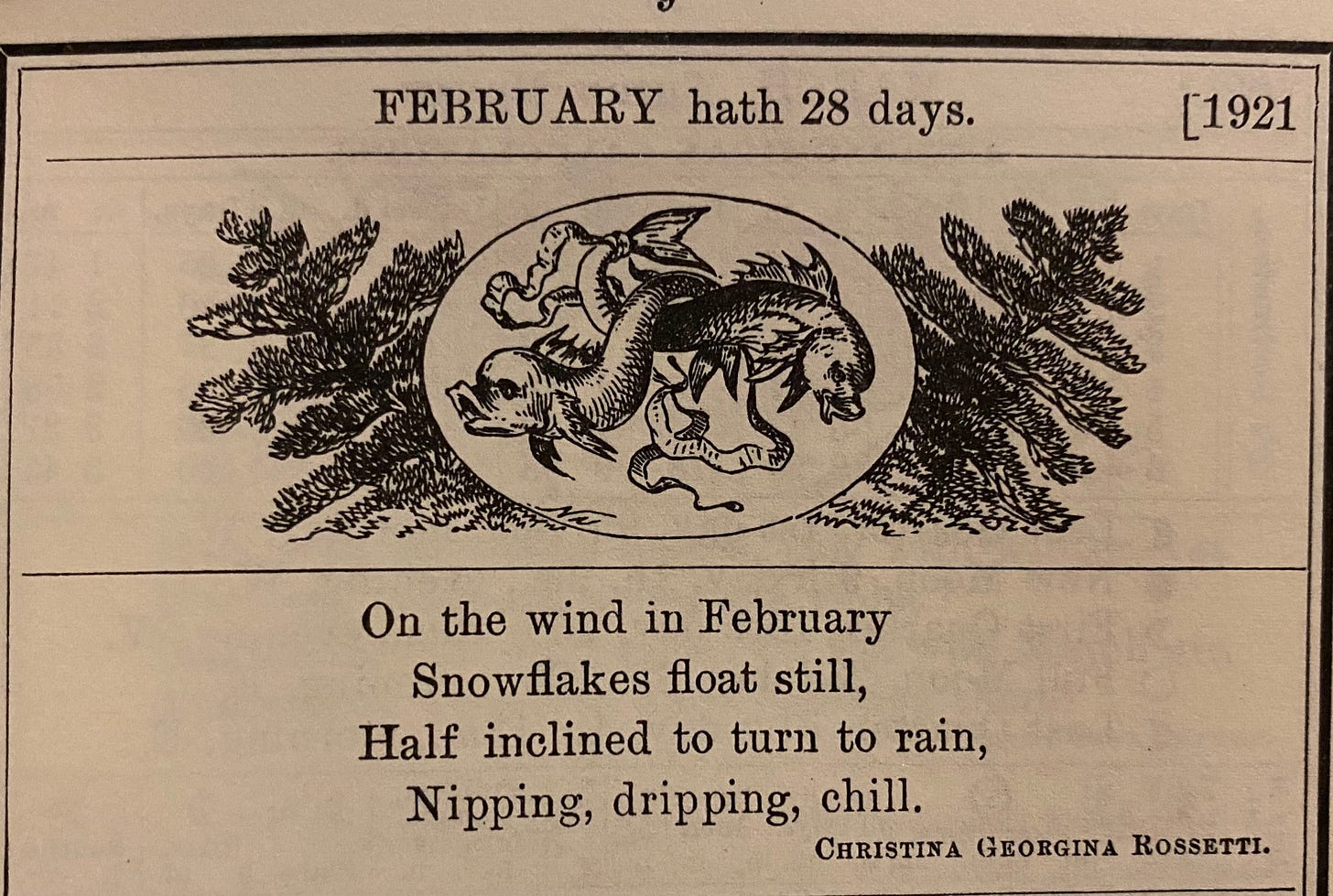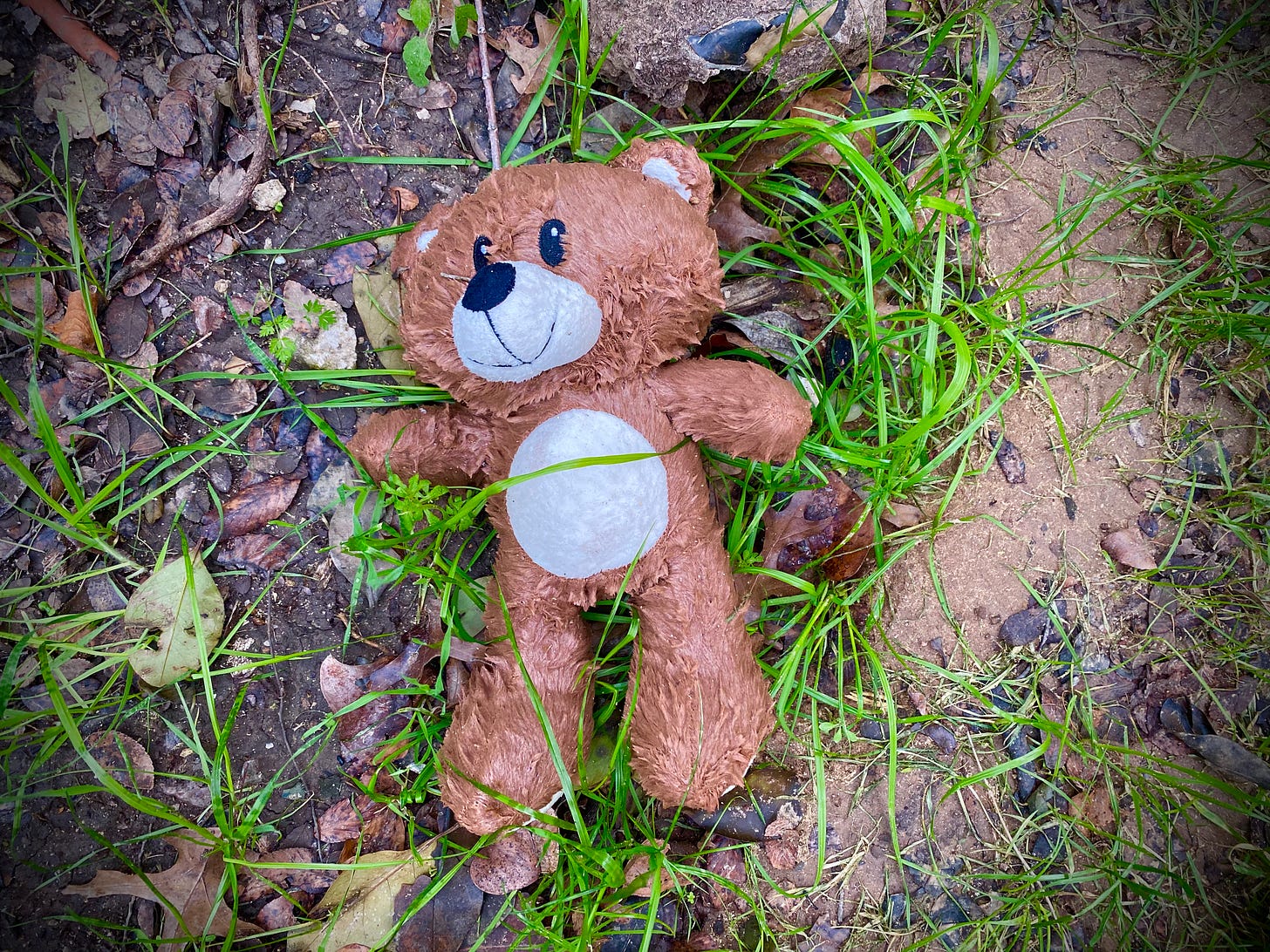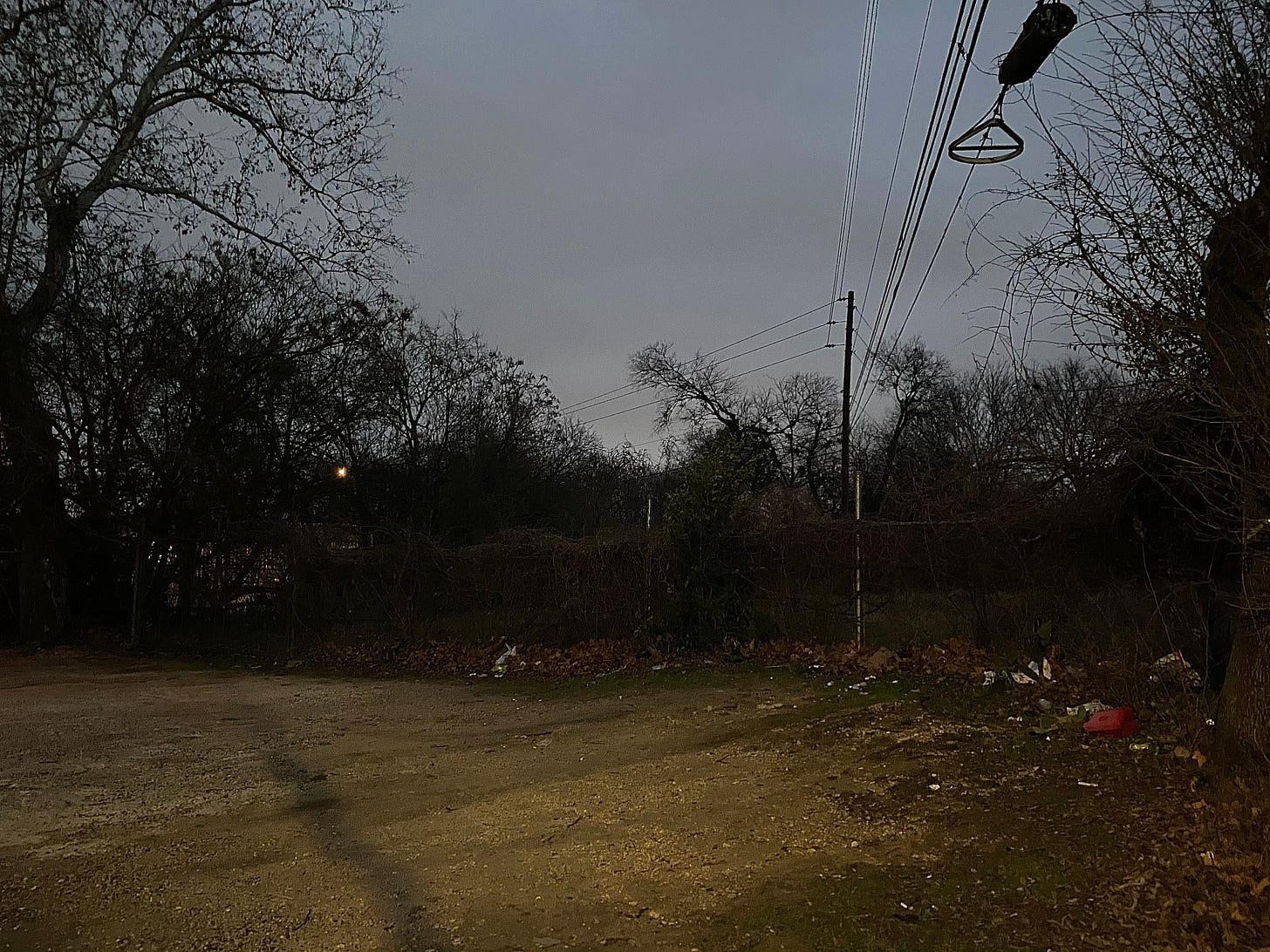A Valentine's greeting from Planet Herschel
Thursday before last the toddler and I went for a walk in the woods at dusk. She is becoming more alert to the sights and sounds in the woods, learning to listen to the birdsong and watch the horizon line for movement. When we got to the river, we looked west toward downtown, and spotted the silhouettes of a group of great blue herons tending their nests in a bare sycamore, the outline of the tree aligned with that of a construction crane resting after a long day helping erect a new office building on the road above the bluff.
The following weekend I tried to find a way closer to the rookery by jumping a neighbor’s fence, but couldn’t get there without getting into deep water. And my canoe is on the rack, waiting for me to replace the rotted yoke I need to portage it down to the water. So I set out to find a different path along the waterline.
There’s an actual path part of the way, a path that gets fainter as the face of the bluff gets steeper. The river pools along that area, and the cormorants drying their wings in the Saturday afternoon sun remind you that the fishing is good where the water gets a little deeper. Eventually the path disappears, and you find yourself bushwhacking through bramble and the debris of buildings and infrastructure they tore down decades ago.
You don’t notice how much trash has been dumped along the river over the years until you get right in it. You see the relics if you paddle it, especially the colored glass of the old medicine bottles and transformer caps. I found an old TV embedded in the dirt, and an entire herd of wild tires. When I found the rookery, I saw that the tree in which the families had made their nests is right at ground zero of a century of outlaw dumping, at a spot where big chunks of concrete sewer pipe rolled down the bluff and came to rest at the water’s edge, too heavy and anchored in the soil to move far even in the big floods.
Handy footing for someone trying to find a good vantage without steeping knee-deep into the muck.
It was mid-afternoon by the time I got there. It’s a beautiful tree, and the first time I spotted this rookery while canoeing this time last year, I thought it was a cottonwood. Once you learn to spot a sycamore, from the seed balls that hang through winter, the mottled bark, or the broad leaves, you quickly realize how popular they are with urban landscapers. And admiring this one and the habitat it afforded, growing up out of a little island of trash and gravel just below the dam, I wondered if it was the wild spawn of some nursery-grown transplant upriver.
I hung out there for a while, managing not to be seen. The blue crankys are easy to take for granted, as common as they are around urban water, even though their population was decimated by our forebears, and despite the pterosaur wonder of the sound and movement when one lifts off within your reach.
There were five birds and four nests, and a few more birds in the water. I didn’t see sign of any young—it looked like they were readying the nests for their arrival, and the expert guides confirm that nest building usually begins in February, in colonies from a few to several hundred pairs, most commonly high up in a tree:
The male goes in search of and selects a nesting site before the female's arrival at the nesting location. After selecting a site, the male begins to gather the resources needed to build a nest. He presents the twigs to the female with great pomp, laying them at her feet and shrieking. The female then takes responsibility for the creation of the nest. She takes the gifts the male brings her and either builds a new nest or uses the supplies to repair an old one. The female then lines the nest with leaves and plants to create padding for the eggs. She lays three to six eggs in the finished nest.
The guides also say diminishing habitat—loss of tall trees in which to nest—is the main threat to the population of these magnificent birds. As I watched their head plumes in the wind, even more moving than the dramatic evidence they provided of the eternity of spring and new life was the resilient ingenuity they had shown building their home in this spot—a sliver of involuntary park that manages to stay mostly invisible and inaccessible to the wingless, yet within earshot of one of the busiest roads in town.
Cold snap and avian P-funk
We try to provide habitat for smaller birds on and around our house, and this week the cardinals and tits started to appear in the cross vine that grows from our roof, plants that stay green through the winter but become noticeably more lively when late winter rains are followed by warm sunny days.
The cardinals in particular love the cross vine, building their nests in the space between the glass and the hanging plants, from twigs and bits of plastic sheeting they salvage from the industrial sites around us. And when you walk in the woods right now, the cardinals are everywhere, easily spotted against the grey trunks and green winter grass. Perfect Valentine’s Day avatars, who remind you that this holiday marries Christian hagiography with pagan observation of the season when birds choose their mates:
"For this was on seynt Volantynys day
Whan euery byrd comyth there to chese his make
Of euery kynde that men thinke may
And that so heuge a noyse gan they make
That Erthe & eyr & tre & euery lake
So ful was that onethe was there space
For me to stonde, so ful was al the place."
— from Chaucer's Parliament of Fowls (1382)
I saw the first cross vine flowers of the year yesterday, just as the cold snap settled over Austin, complete with freezing rain that left the freeways piled with cars. Earlier in the week my copy of the 2021 Old Farmer’s Almanac had arrived in the mail, something I had ordered while investigating just who it is that comes up with the names of our full moons. The almanac forecasted mild weather for us this week, when we are about to get the coldest temps in 60 years.
My copy of the almanac came with facsimiles of the 1921 and 1821 editions, the latter of which included a guide to the seven planets of the solar system: Mercury, Venus, The Earth, Mars, Jupiter, Saturn and Herschel.
Friday morning the dogs and I set out to see how our woodland neighbors were faring with the abrupt change in weather, but the padlock at the back gate was frozen, so we walked over to explore the traffic island at the base of the onramp. It’s a weird spot I have written about a couple of times over the past year, with thick young woods at the point and metal warehouse buildings at the base. There used to be an old basketball hoop standing in the middle of the field, but someone took it down last year. Maybe the new occupants of the buildings on the far side, who last month put up a wooden fence into the woods, right along what must be the property line.
We stepped through the gap in the older fence, and as we crossed the field toward the trees, we came upon a mated pair of red-shouldered hawks together on a low branch. Probably the same pair I saw actually mating there last spring, as the trucks downshifted in the background. Friday they were so busy trying to stay warm that they didn't notice until we were right under them.
We clambered over an old trash pile gone part-way green, following the edge between fence and woods. Three new camps back in there, one right by the fence, occupied by a man listening to rock and roll radio while he slept in, or just tried to stay warm. There was a little wet teddy bear on the ground where we walked.
None of the denizens of this warm corner of the continent were ready for a brutal cold snap bringing northern temperatures to a subtropical state just when it seems spring has already arrived and brought the first flowers and lovebirds with it. When baby, mommy and I walked down to check out the herons Saturday morning, all the nests were empty.
Earlier Saturday morning when I walked out to get the morning papers a little after 6 a.m., I was surprised to find three gnarly-looking coyotes trotting right by our driveway. Maybe 40 pounds each, with those big ears and splotchy coats, and that weirdly stiff gait like wind-up toys. I see them all the time back in the woods, but had never seen them on the pavement, not in this part of town. They were returning from a night out, probably enjoying the hunting opportunities created by a change in the weather that had even the humans huddled in their dens.
They didn’t see me at first, and then they picked up the pace when they did, disappearing like ghost dogs through the fence behind the door factory, following the overgrown right of way where the road once continued on to the ferry landing, into the shadowed ravines beneath the telecom cables.
It’s forecasted to drop another twenty degrees in the next two days, the coldest it has been here in sixty years. I hope all of our neighbors, animal and human, can manage their way through to what’s on the other side.
Catch a tiger by its toe
I didn’t even try to get a picture of Saturday morning’s concrete coyotes, but they looked to be the very same trio who showed up on the trailcam this time last year, just on the other side of the fence. It’s wondrous enough to experience wildlife in the heart of the city, and all the more so when you start to be able to recognize individuals over the course of many seasons.
The night before I dug back into the recently-acquired copy of The Annotated Mother Goose I mentioned here a couple of weeks ago. There’s a lot of secret history embedded in those rhymes, including natural history. Friday I was reading about the count-off rhymes:
And was reminded how it always pays to read the footnotes:
The sacrifices we make to the harshness of the seasons are less deliberate, but no less inequitably distributed.
Black History paddle
If you are interested in some worthy urban nature reading for Black History Month, consider Eddy Harris’s amazing book Mississippi Solo, about his 1998 paddle from the headwaters in Minnesota all the way to New Orleans, and through the ripples of American memory. I wrote about the book last year in my post about Black nature writing. Harris’s later documentary film, River to the Heart, stills seems to be unavailable for streaming, but you can find several snippets and interviews online, including the above trailer.
Stay warm, keep an eye out for your neighbors, and have a safe week.



